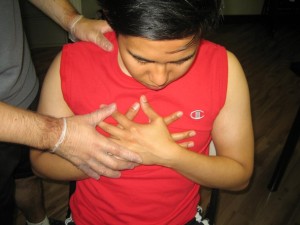A collapsed lung is a dangerous condition which occurs once air enters the space amidst the rib cage and one of the lungs. The air drives on a region or on the entire lung which causes it to collapse. This results to difficulty breathing and the body receives less oxygen.
What is the cause?
Chest injuries can lead to a collapsed lung. Vehicular accidents are the usual cause of chest injuries that leads to the injury.
A collapsed lung can also be brought about by a penetrating injury such as a stab wound. It can also be produced by non-penetrating injuries such as electric shock, fractured ribs or near drowning.
What are the indications?
The usual signs of a collapsed lung include:

- Chest pain
- Difficulty breathing or shortness of breath
- Lightheadedness
Management of a collapsed lung
The treatment for a collapsed lung is based on the root cause and size of the damage and how long it has been present.
A small-sized pneumothorax that is mild and has no symptoms can heal on its own. The excess air in the chest is generally absorbed by the adjacent tissues over the next few days.
If the collapsed lung is causing more symptoms, treatment is necessary to eliminate the air from the chest so that it can be filled with air again.
- For a small-sized injury, the air is eliminated with a needle and syringe. This provides immediate relief, but it might take several days for the lungs to be filled with air again completely.
- If the collapsed lung is large, an anesthetic is given, and the air is eliminated via a tube that is inserted amidst the ribs and via the chest wall. This allows the lung to be filled with air again. This tube has a seal that ensures that the air is airtight. Take note that the excess air is drawn out of the chest and could not return to the chest.
Quick Note / Disclaimer
The material posted on this page on a collapsed lung is for learning and educational purposes only. To learn to recognize the signs and how it is managed, register for a first aid and CPR course with Mississauga First Aid.
